Planning a trip to Europe can feel both exhilarating and overwhelming. With centuries of history, diverse cultures, and breathtaking landscapes packed into a relatively small continent, deciding where to go in Europe can seem like an impossible task. Should you wander through the romantic streets of Paris, explore ancient ruins in Rome, or perhaps venture to the fjords of Norway?
Don’t worry we’ve got you covered. This isn’t just another generic list of European hotspots. Our team of travel experts has curated this comprehensive guide to the best places to go in Europe that goes beyond the obvious tourist traps to help you create the perfect European adventure tailored to your specific interests and travel style.
Whether you’re planning your first European getaway or your fifteenth, this guide will introduce you to both iconic landmarks and hidden gems across the continent, complete with insider tips you won’t find in standard guidebooks. We’ll help you navigate transportation options, understand cultural nuances, and make the most of your time in each destination.
Find Your Perfect European Destination
Before diving into our extensive list of top European destinations, let’s find the perfect match for your travel style. What kind of European experience are you craving?
What Type of Traveler Are You?
Adventure Seeker: You crave adrenaline rushes and outdoor activities
Culture Enthusiast: Museums, historical sites, and local traditions call to you
Food Lover: Culinary experiences are central to your travel plans
Beach Bum: Coastal relaxation and Mediterranean vibes are your priority
Urban Explorer: You thrive in bustling cities with vibrant energy
Nature Devotee: Mountains, forests, and natural wonders top your list
History Buff: Ancient ruins and stories from the past fascinate you
Budget Traveler: You’re looking to maximize experiences while minimizing costs
Luxury Seeker: Premium accommodations and exclusive experiences are essential
When Are You Planning to Visit?
Spring (March-May): Blooming landscapes, fewer tourists, mild weather Summer (June-August): Vibrant festivals, beach season, longest daylight hours Fall (September-November): Beautiful foliage, harvest festivals, comfortable temperatures Winter (December-February): Christmas markets, skiing opportunities, magical snow-covered scenery
Now that you have a better idea of what you’re looking for, let’s explore the best places to go in Europe region by region!
Western Europe: Timeless Classics & Hidden Treasures
1. Paris, France: Beyond the Eiffel Tower
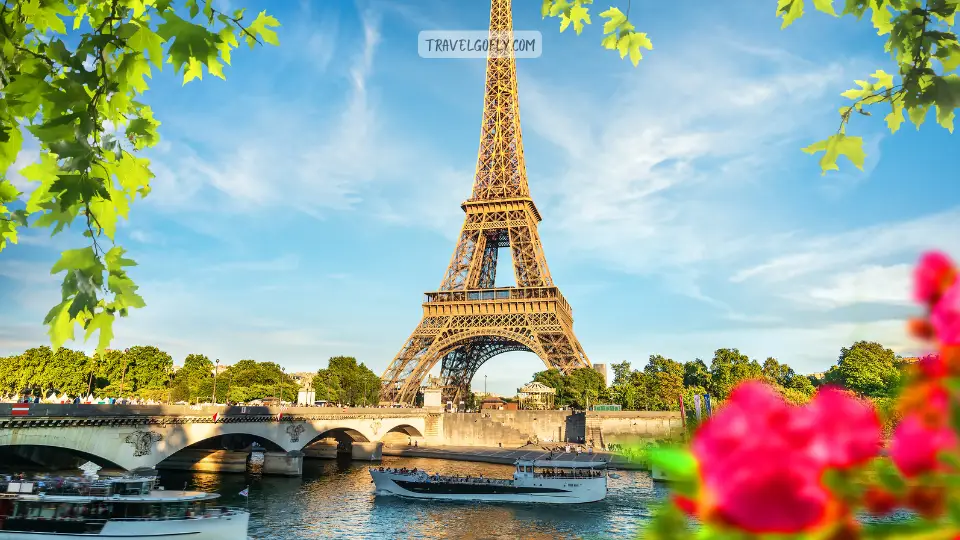 The City of Light continues to enchant visitors with its perfect blend of history, culture, and undeniable romance. While the iconic Eiffel Tower and Louvre Museum deserve their fame, Paris reveals its true magic in the quieter moments a morning espresso at a corner café, an afternoon stroll along the Seine, or discovering a hidden courtyard in Le Marais.
The City of Light continues to enchant visitors with its perfect blend of history, culture, and undeniable romance. While the iconic Eiffel Tower and Louvre Museum deserve their fame, Paris reveals its true magic in the quieter moments a morning espresso at a corner café, an afternoon stroll along the Seine, or discovering a hidden courtyard in Le Marais.
Paris excels at juxtaposing the magnificent with the intimate. Grand boulevards lead to charming neighborhoods where locals shop at specialty food markets and gather in leafy squares. The city architecture spans centuries, from Notre-Dame Gothic grandeur to the ultramodern Centre Pompidou. And of course, there’s the food from humble boulangeries to Michelin-starred restaurants, culinary excellence is woven into the city fabric.
Don’t Miss:
- Watch the sunset from Montmartre steps with the city sprawled below you
- Explore Canal Saint-Martin, where Parisians picnic along the waterway
- Visit Shakespeare and Company bookstore, a historic literary haven
- Sample artisanal cheeses at Marché d’Aligre, one of Paris best food markets
- Take a night cruise on the Seine to see monuments illuminated against the dark sky
Insider Tip: Visit the Louvre on Wednesday or Friday evening when it’s open late you’ll encounter significantly smaller crowds and enjoy a more intimate experience with masterpieces like the Mona Lisa.
Best For: Culture enthusiasts, foodies, romantics, architecture lovers Best Time to Visit: April-June or September-October for pleasant weather and fewer tourists Getting Around: The Paris Metro is comprehensive and easy to navigate; walking is ideal for exploring individual neighborhoods
2. Amsterdam, Netherlands: A Perfect Blend of History and Progressive Culture
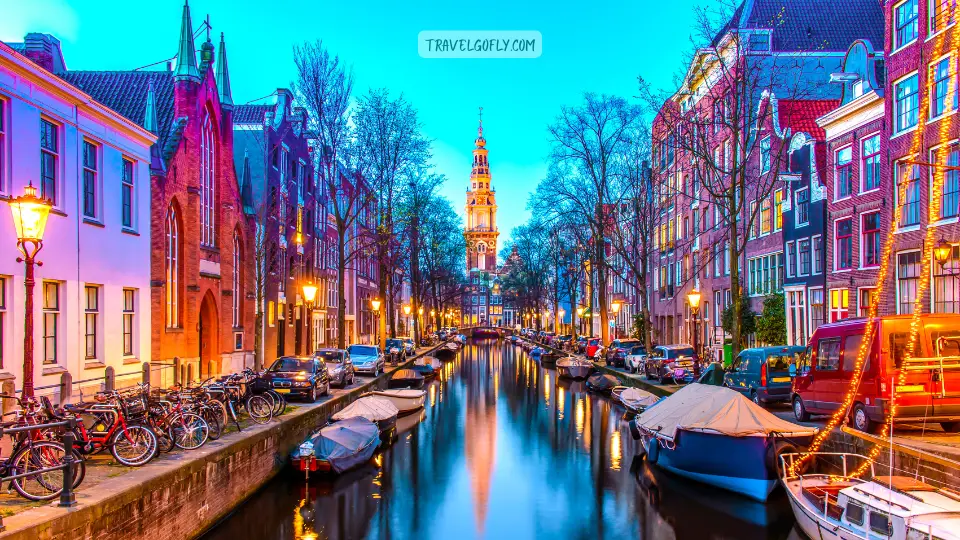 Amsterdam picturesque canals lined with gabled houses create a storybook setting that belies the city progressive spirit. This walkable city offers a unique combination of historic charm and forward-thinking attitudes that make it one of the top European destinations for travelers of all types.
Amsterdam picturesque canals lined with gabled houses create a storybook setting that belies the city progressive spirit. This walkable city offers a unique combination of historic charm and forward-thinking attitudes that make it one of the top European destinations for travelers of all types.
Beyond the famous museums housing works by Van Gogh and Rembrandt, Amsterdam rewards those who explore its distinctive neighborhoods. The Jordaan district feels like a village within the city, with its narrow streets, boutique shops, and cozy cafés. De Pijp offers a multicultural vibe with its famous Albert Cuyp Market and international eateries. Throughout the city, you’ll find “brown cafés” traditional Dutch pubs where locals have gathered for centuries.
Don’t Miss:
- Rent a bike and ride through Vondelpark like a local
- Take a canal cruise at sunset when the bridges light up
- Visit the Anne Frank House for a moving historical experience
- Explore the quirky NDSM Wharf, a former shipyard turned cultural hotspot
- Sample Dutch specialties at Foodhallen, a trendy indoor food market
Insider Tip: Purchase the I amsterdam City Card for free access to most museums, free public transportation, and a complimentary canal cruise it pays for itself quickly if you’re planning to visit several attractions.
Best For: Cultural explorers, history buffs, architecture enthusiasts, bicyclists Best Time to Visit: April-May for tulip season or September for fewer crowds Getting Around: Bicycle is the authentic way to experience Amsterdam; public transportation is excellent for longer distances
3. London, United Kingdom: Where Tradition Meets Innovation
 London seamlessly blends centuries-old traditions with cutting-edge innovation. From the pomp of Buckingham Palace to the street art of Shoreditch, this metropolis offers endless layers to explore, making it a cornerstone of any Europe travel guide.
London seamlessly blends centuries-old traditions with cutting-edge innovation. From the pomp of Buckingham Palace to the street art of Shoreditch, this metropolis offers endless layers to explore, making it a cornerstone of any Europe travel guide.
The city neighborhoods each tell distinct stories Westminster showcases British governance and royalty, Notting Hill charms with colorful houses and vintage markets, while Southbank buzzes with cultural institutions along the Thames. London diversity is reflected in its world-class museums (many of which are free), global culinary scene, and vibrant arts community.
Don’t Miss:
- Experience the changing of the guard at Buckingham Palace
- Browse the treasures of Borough Market, London oldest food market
- Explore the less-visited Sir John Soane Museum, a quirky collection in the former home of an eccentric architect
- Catch panoramic views from the Sky Garden (free with reservation)
- Enjoy a traditional afternoon tea in a historic setting
Insider Tip: Skip the lines at popular attractions by pre-booking tickets online and arriving early. For the Tower of London, join the first tour with a Yeoman Warder (Beefeater) of the day for the most comprehensive and least crowded experience.
Best For: History enthusiasts, theater lovers, foodies, art aficionados Best Time to Visit: May-September for best weather, though London is a year-round destination Getting Around: The Underground (Tube) system is extensive; consider an Oyster card for the best fares
4. Porto, Portugal: Timeless Charm on the Douro River
 Porto offers a perfect mix of old-world charm and contemporary creativity. The city climbs from the banks of the Douro River in a captivating jumble of colorful buildings, creating a vista that has inspired artists and visitors for centuries. Less crowded than Lisbon but equally characterful, Porto rewards those who take time to wander its steep, atmospheric streets.
Porto offers a perfect mix of old-world charm and contemporary creativity. The city climbs from the banks of the Douro River in a captivating jumble of colorful buildings, creating a vista that has inspired artists and visitors for centuries. Less crowded than Lisbon but equally characterful, Porto rewards those who take time to wander its steep, atmospheric streets.
The historic Ribeira district, a UNESCO World Heritage site, features winding medieval alleyways leading to waterfront restaurants and wine cellars. Across the iconic Dom Luís I Bridge, Vila Nova de Gaia houses the famous port wine lodges where visitors can sample the fortified wine that bears the city name. Meanwhile, contemporary Porto shines through its vibrant arts scene, innovative restaurants, and striking modern architecture.
Don’t Miss:
- Marvel at the azulejo tiles covering the walls at São Bento Station
- Browse the stunning Livraria Lello, one of the world’s most beautiful bookstores
- Take a river cruise under Porto six bridges
- Sample port wine at historic cellars in Vila Nova de Gaia
- Climb Torre dos Clérigos for panoramic views of the cityscape
Insider Tip: For an authentic meal without tourist prices, head away from the riverfront to Rua da Picaria or Rua Formosa, where locals enjoy traditional dishes like francesinha (a Portuguese sandwich) in no-frills tascas (taverns).
Best For: Food and wine enthusiasts, photographers, architecture lovers, budget travelers Best Time to Visit: May-June or September-October for pleasant temperatures and fewer tourists Getting Around: The compact historic center is best explored on foot; trams and buses connect outer areas
Mediterranean Europe: Sun-Soaked Splendor
5. Barcelona, Spain: Gaudí Playground by the Sea
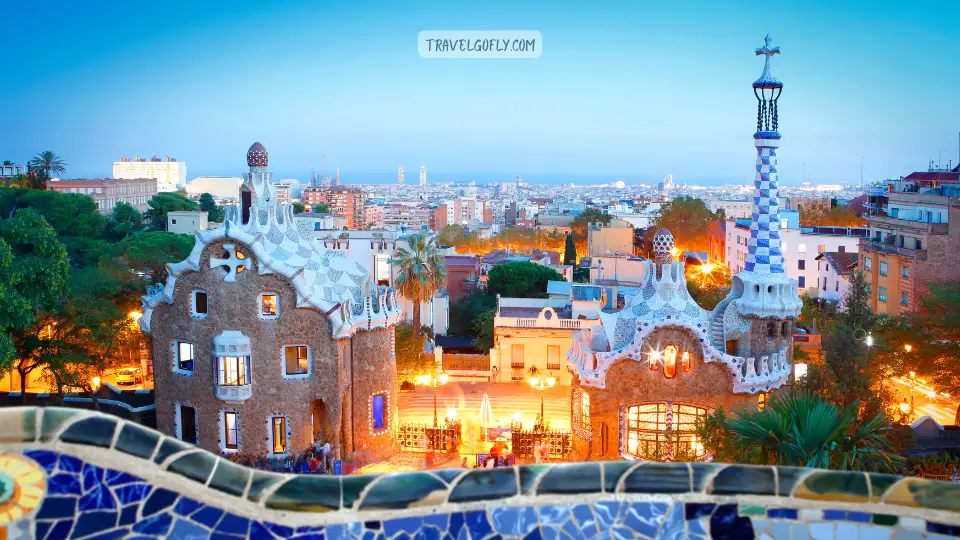 Barcelona captivates visitors with its unique architectural heritage, Mediterranean beaches, and vibrant street life. The visionary works of Antoni Gaudí, including the still-unfinished Sagrada Família and the whimsical Park Güell, give the city an unmistakable aesthetic that sets it apart from anywhere else in Europe.
Barcelona captivates visitors with its unique architectural heritage, Mediterranean beaches, and vibrant street life. The visionary works of Antoni Gaudí, including the still-unfinished Sagrada Família and the whimsical Park Güell, give the city an unmistakable aesthetic that sets it apart from anywhere else in Europe.
Beyond Gaudí’s masterpieces, Barcelona offers distinct neighborhoods to explore: the medieval maze of the Gothic Quarter, the elegant boulevards of Eixample, and the formerly industrial Poblenou with its emerging creative scene. The city’s connection to the sea provides both beautiful urban beaches and a superb seafood culinary tradition, best sampled at the bustling La Boqueria market or neighborhood restaurants called “barri.”
Don’t Miss:
- Watch the spectacular Font Màgica (Magic Fountain) light and music show
- Stroll down La Rambla, then duck into the Mercado de La Boqueria
- Explore the less-visited Hospital de Sant Pau, another modernist masterpiece
- Enjoy sunset drinks at a rooftop bar with views of the Mediterranean
- Join locals for an evening passeig (stroll) along Passeig de Born
Insider Tip: Skip the crowded Barceloneta beach and head to Bogatell Beach instead it’s cleaner, less crowded, and popular with locals. For the best views of the city, hike up to the Bunkers del Carmel, former anti-aircraft bunkers from the Spanish Civil War.
Best For: Architecture enthusiasts, beach lovers, foodies, art fans Best Time to Visit: April-June or September-October for pleasant weather without summer crowds Getting Around: The metro system is efficient; the T10 ticket offers 10 discounted journeys
6. Santorini, Greece: Postcard-Perfect Aegean Paradise
 Santorini dramatic landscape white-washed buildings perched on volcanic cliffs overlooking the deep blue Aegean Sea has made it one of the most photographed places on Earth. This crescent-shaped island, actually the rim of an ancient volcano, offers breathtaking beauty at every turn.
Santorini dramatic landscape white-washed buildings perched on volcanic cliffs overlooking the deep blue Aegean Sea has made it one of the most photographed places on Earth. This crescent-shaped island, actually the rim of an ancient volcano, offers breathtaking beauty at every turn.
The island’s two main towns, Fira and Oia, cascade down the cliffside in a stunning display of Cycladic architecture. While sunset in Oia has become a bucket-list experience for travelers worldwide, Santorini rewards those who venture beyond the main tourist spots. Ancient ruins at Akrotiri reveal a remarkably preserved Minoan settlement, while black, red, and white volcanic beaches offer unique swimming experiences.
Don’t Miss:
- Hike the spectacular trail from Fira to Oia along the caldera edge
- Visit a local winery to taste Assyrtiko, the island distinctive mineral-rich white wine
- Explore the preserved ancient city of Akrotiri, Santorini “Pompeii”
- Take a boat tour to the volcano’s hot springs and nearby uninhabited islands
- Dine on fresh seafood at a taverna in the less touristy village of Amoudi Bay
Insider Tip: Visit in late April, May, early October, or November to enjoy pleasant weather and dramatically fewer crowds. Many restaurants and hotels remain open, but you’ll experience the island beauty without fighting through summer throngs.
Best For: Couples, photographers, luxury travelers, food and wine enthusiasts Best Time to Visit: April-May or September-October to avoid peak crowds Getting Around: Local buses connect major points; renting a car or ATV offers more flexibility
7. Amalfi Coast, Italy: Mediterranean Perfection
 The Amalfi Coast embodies Mediterranean dreams with its dramatic cliffs, pastel-colored villages, and azure waters. This 50-kilometer stretch of coastline south of Naples offers some of Italy most spellbinding scenery and has rightfully earned its place as a UNESCO World Heritage site.
The Amalfi Coast embodies Mediterranean dreams with its dramatic cliffs, pastel-colored villages, and azure waters. This 50-kilometer stretch of coastline south of Naples offers some of Italy most spellbinding scenery and has rightfully earned its place as a UNESCO World Heritage site.
Each town along the coast has its own distinct character: Positano dazzles with its vertical landscape of colorful buildings; Amalfi combines beach life with historical significance as a former maritime republic; Ravello sits high above the coast, offering spectacular views and cultural refinement. Between these famous spots lie smaller villages equally worth exploring, along with hidden beaches and ancient paths that have connected these communities for centuries.
Don’t Miss:
- Drive (or better yet, be driven) along the coastal road for breathtaking views
- Explore Villa Rufolo and Villa Cimbrone in Ravello for spectacular gardens
- Take a boat tour to experience the coast from the water and visit hidden coves
- Hike the ancient Path of the Gods (Sentiero degli Dei) between Bomerano and Nocelle
- Sample limoncello made from the region’s famous lemons
Insider Tip: The coastal bus can be extremely crowded in summer. For a more comfortable experience, take the ferry between towns it’s often faster and offers magnificent views of the coastline from the water.
Best For: Romantic getaways, luxury travelers, hikers, photographers Best Time to Visit: May or September-October for warm weather without the summer crush Getting Around: SITA buses connect the towns; ferries operate between major coastal points
Eastern Europe: Rich History and Emerging Destinations
8. Prague, Czech Republic: A Fairy-Tale Capital
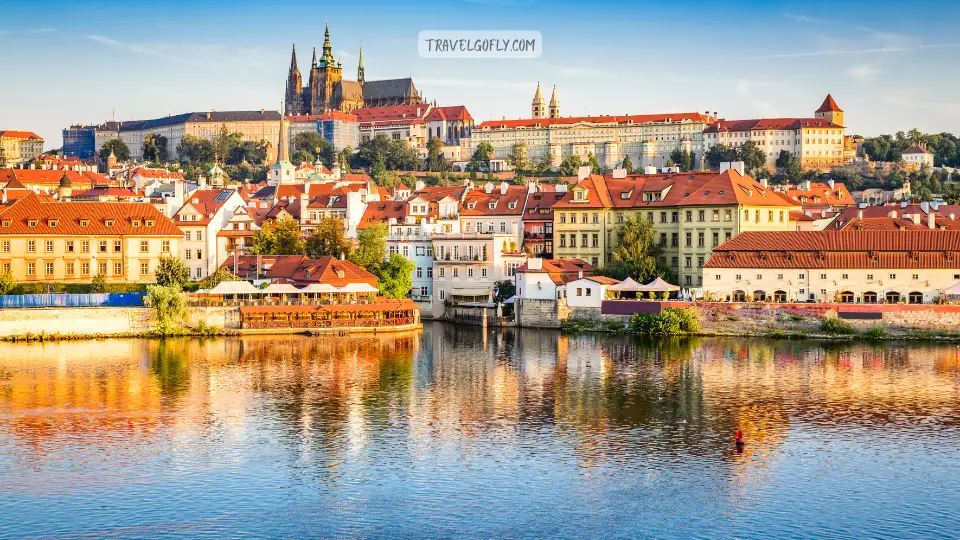 Prague appears to have stepped straight from the pages of a fairy tale, with its preserved medieval old town, soaring spires, and majestic castle overlooking the Vltava River. The Czech capital seamlessly blends Gothic, Baroque, Renaissance, and Art Nouveau architectural styles, creating a visual feast around every corner.
Prague appears to have stepped straight from the pages of a fairy tale, with its preserved medieval old town, soaring spires, and majestic castle overlooking the Vltava River. The Czech capital seamlessly blends Gothic, Baroque, Renaissance, and Art Nouveau architectural styles, creating a visual feast around every corner.
Prague’s historic center, largely untouched by World War II, rewards unhurried exploration. Cross the statue-lined Charles Bridge at dawn to avoid crowds, get lost in the narrow streets of Malá Strana (Lesser Town), and discover hidden courtyards and gardens throughout the city. Beyond architectural splendors, Prague offers world-class beer, hearty Czech cuisine, and vibrant cultural experiences from classical concerts to avant-garde art.
Don’t Miss:
- Explore Prague Castle, the largest ancient castle complex in the world
- Watch the astronomical clock mark the hour in Old Town Square
- Visit the Jewish Quarter (Josefov) and its profoundly moving Old Jewish Cemetery
- Enjoy a classical concert in a historic church or palace
- Escape the crowds in Vyšehrad, a historic fort with sweeping city views
Insider Tip: Most tourists never cross the river beyond Charles Bridge. For a more authentic Prague experience, explore up-and-coming neighborhoods like Karlín or Vinohrady, where you’ll find excellent restaurants, hip cafés, and beautiful parks frequented by locals.
Best For: History buffs, architecture enthusiasts, classical music lovers, budget travelers Best Time to Visit: April-May or September-October for pleasant weather and fewer tourists Getting Around: The historic center is walkable; trams provide convenient connections to outer areas
9. Budapest, Hungary: The Pearl of the Danube
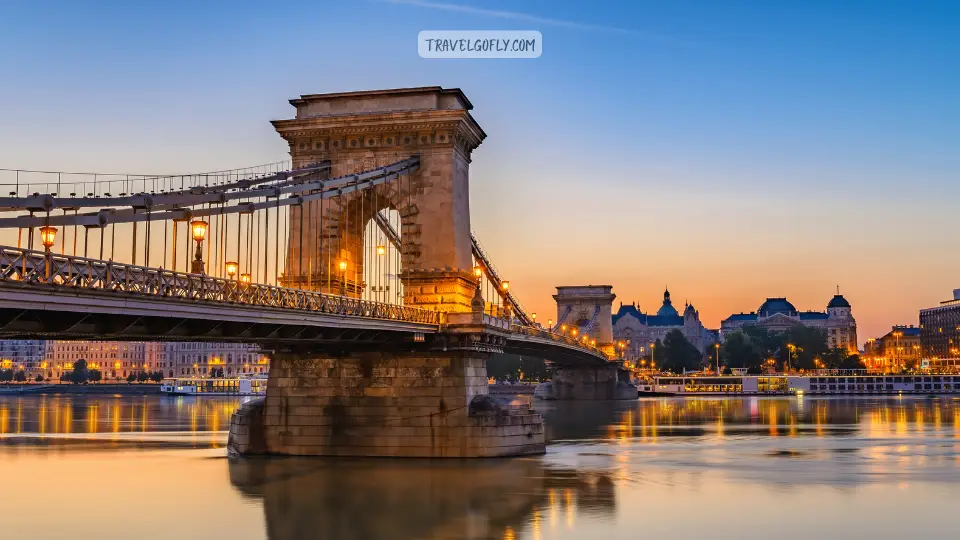 Budapest, with its grand buildings straddling the mighty Danube River, offers an intoxicating blend of history, culture, and thermal bathing traditions. The Hungarian capital actually comprises two distinct cities hilly, residential Buda and flat, lively Pest that merged in 1873 and have developed into one of Central Europe most captivating destinations.
Budapest, with its grand buildings straddling the mighty Danube River, offers an intoxicating blend of history, culture, and thermal bathing traditions. The Hungarian capital actually comprises two distinct cities hilly, residential Buda and flat, lively Pest that merged in 1873 and have developed into one of Central Europe most captivating destinations.
The city’s turbulent history has left an eclectic architectural legacy, from Roman ruins and medieval castles to Art Nouveau palaces and stark Soviet-era structures. Budapest famous thermal baths, fed by natural hot springs, offer a unique cultural experience and relaxation opportunity. Recent years have seen the emergence of trendy ruin bars in abandoned buildings, award-winning restaurants reimagining Hungarian cuisine, and a vibrant contemporary arts scene.
Don’t Miss:
- Soak in the Neo-Baroque Széchenyi Thermal Bath, one of Europe largest spa complexes
- Walk across Chain Bridge at sunset for spectacular views
- Explore the labyrinthine Central Market Hall for local products and food
- Cruise the Danube River to see the illuminated Parliament Building and other monuments
- Experience Budapest famous ruin bar scene at Szimpla Kert and others
Insider Tip: For panoramic views without the crowds, skip the popular Fisherman Bastion and head to Gellért Hill instead. Climb to the Liberty Statue at sunset for breathtaking vistas of the entire city with far fewer tourists.
Best For: History lovers, architecture enthusiasts, spa seekers, budget travelers Best Time to Visit: March-May or September-November for mild weather and fewer tourists Getting Around: Efficient public transportation includes metros, trams, and buses; many attractions are walkable
10. Krakow, Poland: Medieval Splendor with Modern Edge
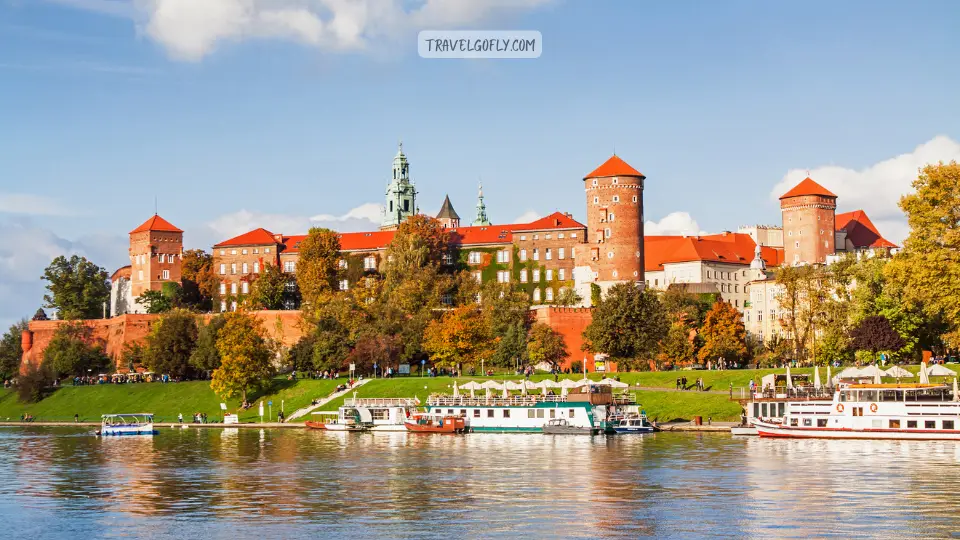 Krakow stands as one of Eastern Europe best-preserved medieval cities, with an atmospheric old town that survived World War II largely intact. Poland former royal capital combines historical grandeur with youthful energy, thanks to its large student population and emerging creative scene.
Krakow stands as one of Eastern Europe best-preserved medieval cities, with an atmospheric old town that survived World War II largely intact. Poland former royal capital combines historical grandeur with youthful energy, thanks to its large student population and emerging creative scene.
The UNESCO-listed Old Town centers around the magnificent Market Square (Rynek Główny), one of Europe largest medieval town squares. Nearby, Wawel Castle tells the story of Polish royalty through the centuries. Just south of the historic center, the former Jewish quarter of Kazimierz has transformed from a neglected neighborhood to a bohemian district filled with atmospheric cafés, vintage shops, and synagogues that preserve the memory of Jewish life before the Holocaust.
Don’t Miss:
- Listen for the hourly trumpet call (hejnał) from St. Mary Basilica
- Explore the underground museum beneath the Market Square
- Visit Schindler Factory, now an excellent interactive museum
- Wander through Kazimierz to discover hidden courtyards and street art
- Take a day trip to the UNESCO-listed Wieliczka Salt Mine with its underground cathedral
Insider Tip: While most visitors focus exclusively on the Old Town, the district of Podgórze across the river offers fascinating historical sites including remnants of the Jewish ghetto and the moving Ghetto Heroes Square, plus excellent local restaurants with non-tourist prices.
Best For: History enthusiasts, budget travelers, food lovers, nightlife seekers Best Time to Visit: April-May or September-October for pleasant temperatures and fewer crowds Getting Around: The compact Old Town is best explored on foot; trams connect to outer districts
11. Copenhagen, Denmark: Hygge and Happiness
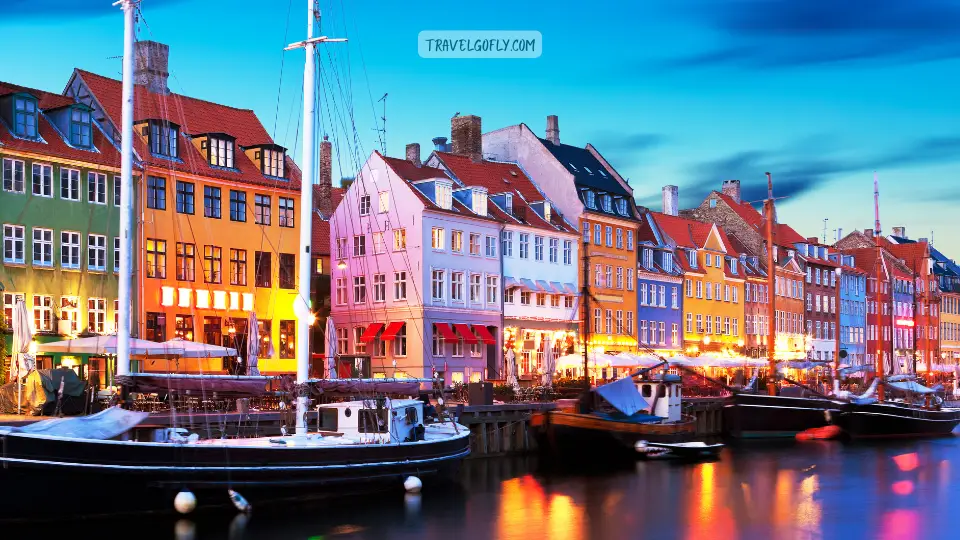 Copenhagen consistently ranks among the world most livable cities, and visitors quickly understand why. The Danish capital combines picturesque harbor scenes, cutting-edge design, world-renowned dining, and bike-friendly infrastructure with the famous Danish concept of hygge a quality of coziness and comfortable conviviality.
Copenhagen consistently ranks among the world most livable cities, and visitors quickly understand why. The Danish capital combines picturesque harbor scenes, cutting-edge design, world-renowned dining, and bike-friendly infrastructure with the famous Danish concept of hygge a quality of coziness and comfortable conviviality.
The compact city center makes Copenhagen ideal for exploration on foot or by bicycle. Colorful 17th and 18th-century buildings line the waterfront at Nyhavn, while the autonomous community of Christiania offers a glimpse into alternative living. The city excels in blending historic charm with forward-thinking innovation nowhere more evident than in its food scene, which ranges from casual smørrebrød (open-faced sandwiches) to the pioneering New Nordic cuisine that has influenced restaurants worldwide.
Don’t Miss:
- Take a canal tour to see the city from the water
- Visit Tivoli Gardens, the enchanting amusement park that inspired Walt Disney
- Explore the rejuvenated meatpacking district (Kødbyen) for excellent restaurants and nightlife
- Climb the spiral tower of the Church of Our Saviour for panoramic views
- Experience Danish design at the Design Museum Denmark
Insider Tip: Rent a bicycle to explore like a local Copenhagen extensive network of dedicated bike lanes makes cycling safe and efficient even for inexperienced riders. The city public bicycle sharing system, Bycyklen, offers electric bikes with built-in GPS navigation.
Best For: Design enthusiasts, food lovers, cyclists, family travelers Best Time to Visit: May-September for comfortable temperatures and outdoor activities Getting Around: Bicycle is the authentic Copenhagen experience; public transportation is excellent
12. Stockholm, Sweden: Elegant City on the Water
 Built across 14 islands where Lake Mälaren meets the Baltic Sea, Stockholm seamlessly blends water, architecture, and greenery. The Swedish capital offers a unique urban experience where nature is never far away, historical preservation meets innovation, and quality of life takes priority.
Built across 14 islands where Lake Mälaren meets the Baltic Sea, Stockholm seamlessly blends water, architecture, and greenery. The Swedish capital offers a unique urban experience where nature is never far away, historical preservation meets innovation, and quality of life takes priority.
Stockholm distinct islands each have their own character: Gamla Stan (Old Town) charms with narrow medieval streets and the Royal Palace; trendy Södermalm offers vintage shopping and hip cafés; and Djurgården houses many of the city top museums and parkland. Throughout the city, the Swedish aesthetic of clean lines and functional beauty is evident in everything from historic buildings to metro stations transformed into art installations.
Don’t Miss:
- Wander through Gamla Stan winding cobblestone streets
- Visit the Vasa Museum to see the almost perfectly preserved 17th-century warship
- Explore Stockholm’s unique metro stations, often called the world longest art gallery
- Take a boat trip through the Stockholm archipelago with its 30,000 islands and islets
- Experience Swedish food culture at Östermalms Saluhall food market
Insider Tip: Purchase the Stockholm Pass if you plan to visit several attractions it includes free entry to over 60 top attractions and museums, free sightseeing tours, and optional public transportation. For budget travelers, many museums offer free admission on specific days or times.
Best For: Design lovers, museum enthusiasts, outdoor adventurers, families Best Time to Visit: May-September for long daylight hours and pleasant temperatures Getting Around: Public transportation is excellent; the SL Access card works for metro, buses, and some ferries
13. Bergen, Norway: Gateway to the Fjords
 Nestled between seven mountains and facing the sea, Bergen offers a perfect introduction to Norway spectacular natural beauty combined with rich Hanseatic history. As the country second-largest city, Bergen balances urban amenities with easy access to some of the world most dramatic landscapes.
Nestled between seven mountains and facing the sea, Bergen offers a perfect introduction to Norway spectacular natural beauty combined with rich Hanseatic history. As the country second-largest city, Bergen balances urban amenities with easy access to some of the world most dramatic landscapes.
The UNESCO-listed Bryggen wharf, with its colorful wooden buildings dating back to the 14th century, forms the historic heart of the city. Beyond this iconic waterfront, Bergen rewards exploration with its fish market, numerous museums, and artistic heritage as the hometown of composer Edvard Grieg. However, Bergen greatest appeal may be its role as the gateway to the fjords some of Norway most magnificent natural wonders are accessible on day trips from the city.
Don’t Miss:
- Ride the Fløibanen funicular up Mount Fløyen for panoramic views
- Explore the UNESCO-listed wooden buildings of Bryggen
- Take a fjord cruise to experience Norway dramatic landscapes
- Visit composer Edvard Grieg home at Troldhaugen
- Sample fresh seafood at the historic fish market
Insider Tip: Bergen is known as the city of rain with precipitation possible year-round. Like locals, always be prepared with waterproof clothing, but don’t let the weather deter you some of Bergen most atmospheric moments come when mist clings to the surrounding mountains or rain makes the cobbled streets gleam.
Best For: Nature lovers, photographers, hiking enthusiasts, history buffs Best Time to Visit: May-September for milder temperatures and longer daylight hours Getting Around: The compact city center is walkable; buses and light rail connect to outer areas
Alpine Europe: Mountain Majesty
14. Hallstatt, Austria: Lakeside Alpine Perfection
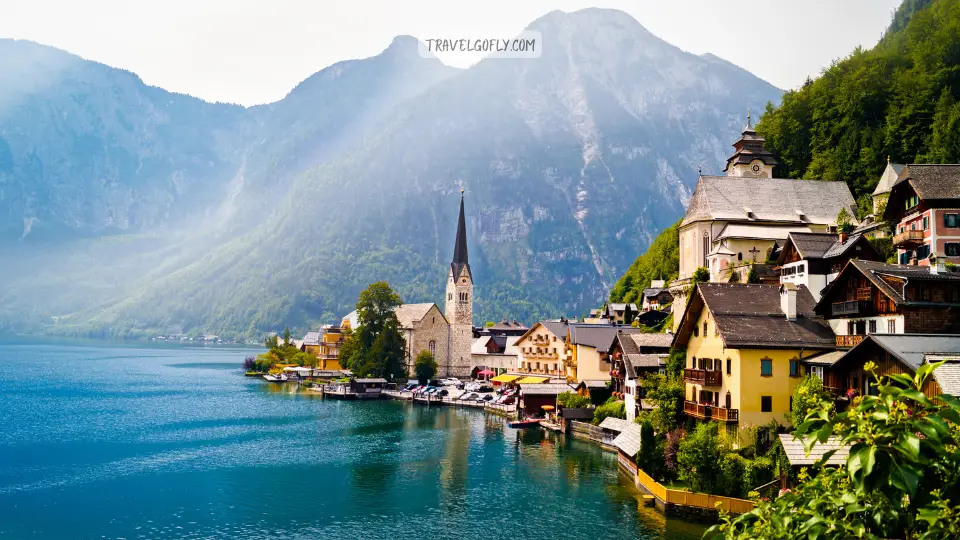 Hallstatt setting a tiny village wedged between towering mountains and the glassy waters of Lake Hallstatt seems almost too perfect to be real. This Austrian gem in the Salzkammergut region has become an Instagram sensation in recent years, but its appeal goes far deeper than photogenic views.
Hallstatt setting a tiny village wedged between towering mountains and the glassy waters of Lake Hallstatt seems almost too perfect to be real. This Austrian gem in the Salzkammergut region has become an Instagram sensation in recent years, but its appeal goes far deeper than photogenic views.
The village history revolves around salt mining, an industry that brought prosperity to this remote Alpine location for thousands of years. Today, visitors can explore the ancient salt mines, wander through the charming streets lined with 16th-century Alpine houses, and visit the macabre but fascinating Bone Chapel (Beinhaus) with its painted skulls. Above all, though, Hallstatt offers a sense of tranquility and connection to nature that becomes most apparent when day-trippers depart.
Don’t Miss:
- Take the funicular to the Hallstatt Skywalk for breathtaking views
- Visit the world oldest salt mine on guided tour
- Hike to the Waldbachstrub Waterfall through stunning scenery
- Explore the prehistoric museum showcasing the area 7,000-year history
- Rent an electric boat to experience the lake from the water
Insider Tip: Stay overnight to experience the magic of Hallstatt in the early morning and evening hours when day tourists are absent. The lake takes on an ethereal quality at dawn when mist often hangs over the water and the village slowly comes to life.
Best For: Photographers, nature lovers, history enthusiasts Best Time to Visit: May-June or September-October for fewer crowds Getting Around: The village is tiny and easily explored on foot
15. Lucerne, Switzerland: Alpine Elegance
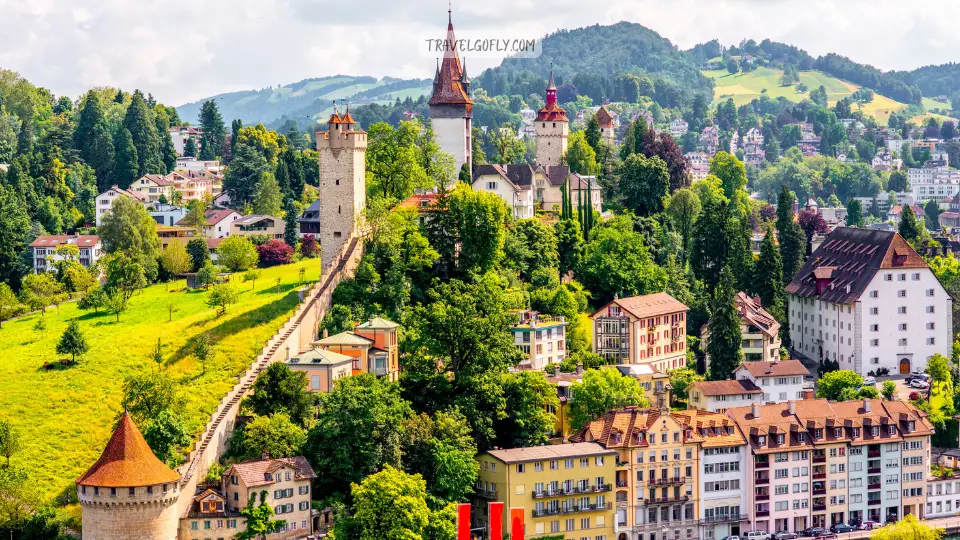 Lucerne (Luzern) encapsulates everything that makes Switzerland special: a stunning lakeside setting surrounded by snow-capped mountains, impeccably preserved medieval architecture, and Swiss efficiency blended with Mediterranean flair. This compact city serves as both a destination in itself and a perfect base for exploring the dramatic landscapes of central Switzerland.
Lucerne (Luzern) encapsulates everything that makes Switzerland special: a stunning lakeside setting surrounded by snow-capped mountains, impeccably preserved medieval architecture, and Swiss efficiency blended with Mediterranean flair. This compact city serves as both a destination in itself and a perfect base for exploring the dramatic landscapes of central Switzerland.
The city symbol is the 14th-century Chapel Bridge (Kapellbrücke), a covered wooden footbridge spanning diagonally across the Reuss River. The well-preserved Old Town features painted buildings, intimate squares, and guild halls that recall Lucerne wealthy past. Modern attractions include excellent museums and the moving Lion Monument, described by Mark Twain as the most mournful and moving piece of stone in the world.
Don’t Miss:
- Cruise Lake Lucerne surrounded by mountain scenery
- Ride the world steepest cogwheel railway up nearby Mount Pilatus
- Walk along the medieval city walls for panoramic views
- Explore the Swiss Transport Museum, the country most popular museum
- Attend a concert at the KKL Luzern, a modern architectural masterpiece with exceptional acoustics
Insider Tip: The Swiss Travel Pass may seem expensive but offers excellent value if you plan to use public transportation extensively and visit mountains around Lucerne. It covers trains, buses, boats, and many mountain railways, plus free entry to over 500 museums.
Best For: Mountain enthusiasts, photographers, music lovers, luxury travelers Best Time to Visit: June-September for summer activities; December for Christmas markets Getting Around: The compact city center is walkable; an efficient bus system connects outer areas
Practical Europe Travel Planning
Visa Information
For non-European travelers, visa requirements vary depending on your nationality and the countries you plan to visit. Many European countries are part of the Schengen Area, which allows for visa-free travel between member states. Currently, visitors from countries like the United States, Canada, Australia, and many others can stay in the Schengen Area for up to 90 days within a 180-day period without a visa.
However, starting in late 2025, the European Travel Information and Authorization System (ETIAS) will require pre-registration for visitors from previously visa-exempt countries. Always check the latest requirements with official government websites or consulates before planning your trip.
Budgeting for Europe
Europe spans the full spectrum from budget-friendly to ultra-luxury destinations. Eastern European countries like Poland, Hungary, and the Czech Republic generally offer the best value, while Scandinavian countries and Switzerland rank among the most expensive.
As a general guideline:
- Budget travelers can manage on €50-80 per day in Eastern Europe and €80-120 in Western Europe
- Mid-range travelers should expect to spend €120-200 per day in most Western European countries
- Luxury experiences typically start at €200+ per day
To save money:
- Consider traveling during shoulder seasons (April-May or September-October)
- Mix expensive destinations with more affordable ones
- Look into city cards that offer free public transportation and museum entries
- Book accommodations with kitchen facilities to prepare some of your own meals
- Research free activities and attractions at each destination
Getting Around Europe
Europe boasts one of the world’s best public transportation networks, making it relatively easy to navigate between and within countries:
Trains: The extensive European rail network offers a comfortable and scenic way to travel. High-speed trains connect major cities, while regional services reach smaller destinations. Consider rail passes like Eurail if you plan extensive train travel.
Budget Airlines: Carriers like Ryanair, EasyJet, and Wizz Air offer remarkably cheap flights between European cities, though be aware of extra fees and often remote secondary airports.
Buses: Companies like FlixBus provide affordable intercity connections, often at a fraction of train prices.
Car Rentals: Renting a car offers flexibility for exploring rural areas, though it may be impractical in major cities due to limited parking and traffic restrictions.
Local Transport: Most European cities have excellent public transportation systems. Look for multi-day passes to save money if you’ll be using them frequently.
Where to Stay
Europe offers accommodations for every budget and travel style:
Hotels: Range from international chains to unique boutique properties. Historic buildings converted to hotels often provide character you won’t find elsewhere.
Hostels: No longer just for backpackers, many European hostels now offer private rooms and upscale amenities while maintaining their social atmosphere.
Apartments: Platforms like Airbnb and Vrbo allow you to live like a local and can be economical for longer stays or family travel.
Unique Options: Consider castle stays in Ireland, shepherds’ huts in England, trulli houses in Italy, or cave hotels in Greece for memorable experiences.
Packing Essentials
- Comfortable walking shoes (European cities often have cobblestone streets)
- Power adapter (Europe uses different electrical outlets than many other regions)
- Weather-appropriate layers (conditions can vary significantly)
- Modest clothing for visiting religious sites
- Reusable water bottle (tap water is safe to drink in most of Europe)
- Small day bag or anti-theft backpack for city exploration
- Digital copies of important documents
Your European Adventure Awaits
Europe’s richness comes not just from its famous landmarks, but from the tapestry of experiences it offers—from savoring a perfect espresso at a Parisian café to watching the sunset over Santorini’s caldera, from hiking Alpine trails to discovering the perfect local restaurant down a cobblestone side street.
The destinations we’ve shared represent just a fraction of the best places to go in Europe. Each country, region, and city offers its own unique charm and character waiting to be discovered. Whether you’re drawn to iconic landmarks, natural wonders, cultural experiences, or culinary adventures, Europe rewards curious travelers with memories that last a lifetime.
We’d love to hear about your favorite European destinations! Share your experiences in the comments below, or subscribe to our newsletter for more travel inspiration, practical tips, and exclusive guides to help you plan your perfect European adventure.
Have you experienced any of these destinations? Which European location is next on your bucket list? Let us know in the comments!
